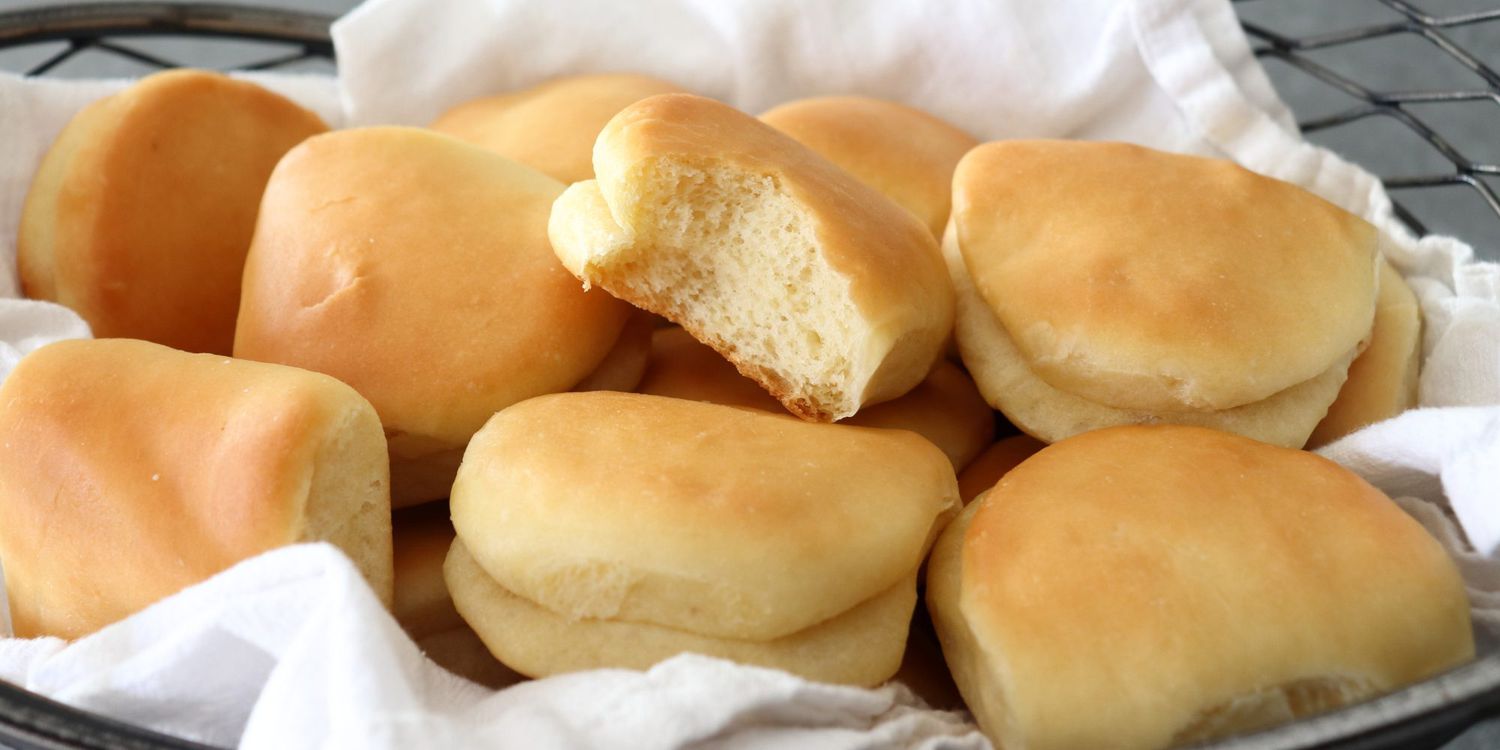If you’ve ever had a Parker House roll, you know they are a special breed of bread — soft, fluffy, and buttery. But what actually makes a Parker House roll a Parker House roll? Let’s start with some history.
Where Did Parker House Rolls Come From?
Parker House rolls originated at the Parker House hotel (now the Omni Parker House) in Boston in the 1800s. We spoke with the Omni Parker House house historian Susan Wilson who gave us the full history of these iconic rolls.
“In the 19th century the idea of a moist, fluffy, crustless, buttery roll was unheard of,” Wilson says. “Breads in general were hard on the outside and hard on the inside.” They were so hard in fact, that Wilson says they know for sure that there were cases of food fights at Harvard where guys got hit in the eye with a loaf of bread and lost their vision.
So in the 1870s a German baker working at the Parker House, Ward, created this recipe for soft, crustless rolls. When we asked Wilson how, given the ingredients available at the time, Ward was finally able to create a soft bread, she told us, “I swear every third thing they do is put on more butter … in every stage of the process, it’s like, ‘Oh! They finished baking, let’s put on some more butter.” So that buttery flavor you love in these renowned rolls could be there simply because in the 1870s adding in those layers of fat was the only way to ensure it stayed moist, tender, and soft.
Why Are Parker House Rolls Folded?
Not all Parker House-style rolls have that signature fold. Some, like the ever-popular Sister Shubert’s rolls, are simple round rolls that rise together in a pan to create a more pull-apart style but with the same soft, crustless texture and buttery flavor. But a true Parker House roll is folded “almost like a pocketbook,” as Wilson says, with a small opening on the side.
There’s a rumor that the fold was not added by design, but rather by accident when a chef at the Parker House became enraged, threw some dough at the wall to release his anger, and that’s how the thrown dough turned out. The chef liked it, so he started doing it that way from then on. Wilson says they’ve never been able to confirm this story is true, but you never know.
More likely, the fold was created by design so that when you’re ready to eat it you can, you guessed it, easily open it up to add even more butter inside.
How Did the Parker House Roll Become So Popular?
As mentioned above, the Parker House Roll was unique for its time because it was the first soft bread available. The novelty of it alone was enough to make people sing its praises — literally. The French composer Jacques Offenbach came to the Parker House in 1876. He went to the restaurant and when he was served the rolls, he apparently started singing a tune in their praise, “Parker House rolls, Parker House rolls, how I love you.” Later he expanded that song into an entire Grand Opera all inspired by his love of Parker House rolls.
So obviously when you have a roll this good, you don’t just give the recipe away for free! The Parker House sold the rolls around the world because they kept the recipe a secret. Some people tried to reverse engineer the recipe and publish their own versions, but it was never quite the same as the original.
But Wilson says that in the 1930s Franklin and Eleanor Roosevelt would come to Boston frequently and stay at the Parker House. Eleanor loved the rolls so much that the cook at the White House at the time, Henrietta Nesbitt, requested that the recipe be forwarded to them in Washington, D.C. “Now how are you going to say no to the First Lady?” Wilson says.
Wilson has not been able to find proof that the Parker House ever sent the recipe to Nesbitt (though, it could have been handed over in person). Though eventually, the recipe for Parker House rolls — the real recipe from the Parker House — appeared in the White House Cookbook that Nesbitt published. Now you can get the recipe for free on the Parker House website, so you can probably credit Eleanor Roosevelt for the widespread availability of America’s favorite dinner roll.




